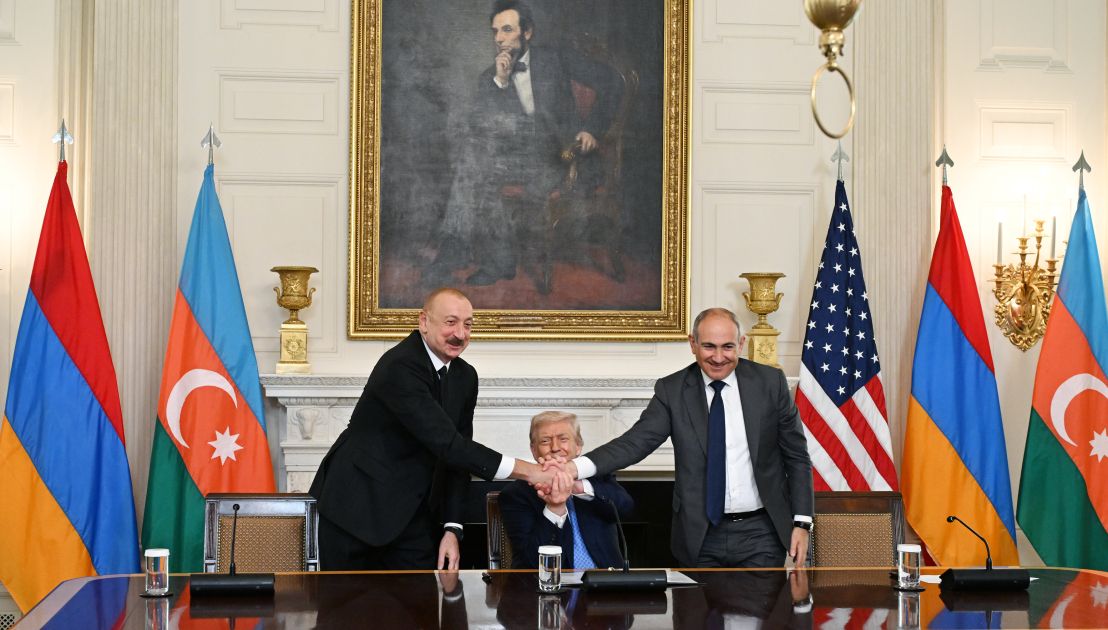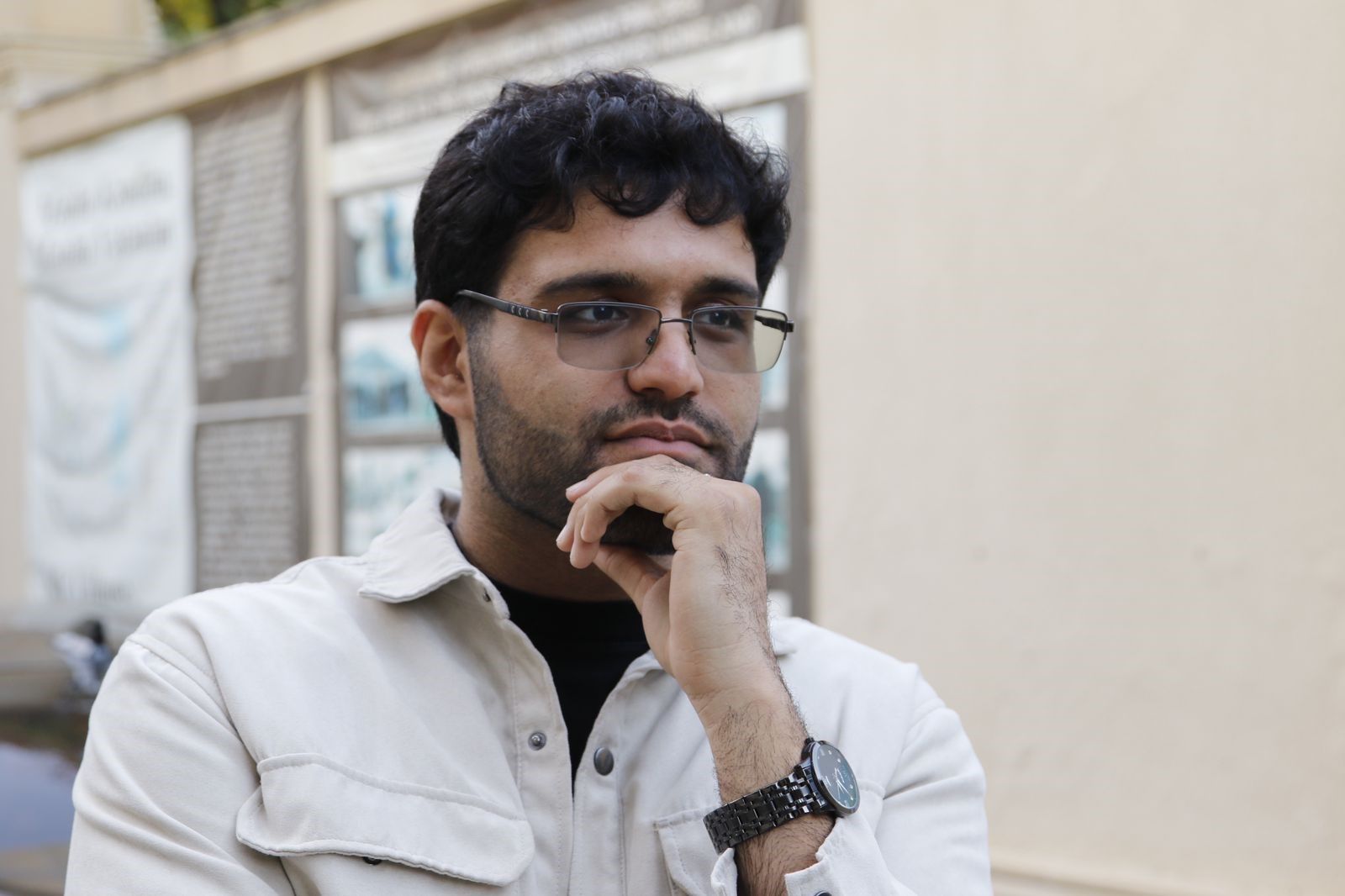Washington meeting reshapes South Caucasus geopolitics and peace process

The historic meeting between Azerbaijan, the US, and Armenia has taken place, demonstrating a true victory of high-level diplomacy.
It heralds a profound shift in the political, economic, and strategic landscape of the entire South Caucasus region. The concurrent presence of Armenian Prime Minister Nikol Pashinyan in Washington created a dual diplomatic platform one that advances direct Baku-Washington ties alongside a parallel process of Baku-Yerevan negotiations.
The Joint Declaration signed by Azerbaijan, Armenia, and the United States in Washington is anything but a routine protocol. It represents a multilayered political and economic framework that sets a new regional balance of power, redefines the rules of engagement, and clearly delineates the roles of key external actors. Far from the product of a single negotiation round, this agreement serves as a long-term blueprint that integrates the South Caucasus more fully into the global political and economic system.
At the heart of this agreement lies the initialing of the text of a future peace treaty between Baku and Yerevan. While not the final signature, this step signifies that both parties have agreed on the treaty’s final wording and have moved beyond prior fundamental disagreements. The declaration’s acknowledgment of the “need for ratification” — tied explicitly to constitutional amendments in Armenia — enshrines one of Azerbaijan’s key strategic conditions and paves the way for formal legal closure of the conflict.
Another landmark clause is the joint call for the OSCE to cease the activities of the Minsk Group, a post-conflict mechanism whose political relevance has long faded. This move symbolically and practically closes a chapter on outdated mediation models, making room for new formats better suited to today’s realities.
reconnecting the region: the zangezur corridor and transport
cooperation
Beyond politics, the agreement addresses vital infrastructure
issues. It guarantees unhindered passage between Azerbaijan’s main
territory and its Nakhchivan exclave through Armenian soil. This is
not merely a logistical detail but a critical piece of a broader
geoeconomic puzzle linking transport and energy corridors across
the region. Physical connectivity, after all, underpins both
political stability and the attractiveness of the region for
foreign investment.
Central to the declaration is the TRIPP — Trump Route for International Peace and Prosperity project. This initiative merges geopolitical strategy with economic development by positioning the Zangezur corridor as a critical artery for regional growth. Beyond its immediate economic benefits, TRIPP embodies the US’s ambition to embed itself strategically in the region’s infrastructure, granting American capital a stake in transport, energy, and digital networks.
principles for stability: respect, rejection of revanchism, and
international norms
The declaration’s principles — respect for borders, renunciation of
territorial claims, and rejection of force — may sound formulaic,
but they establish a crucial normative foundation. In a world where
international institutions are increasingly questioned, affirming
these universal standards represents an effort to rebuild stable,
rule-based order in a volatile region.
Symbolism carries great weight in diplomacy, and the document’s closing paragraph thanks President Trump personally for his mediation. This formalizes his role as guarantor, elevating the political responsibility of all parties before Washington and underscoring the US’s commitment to the process.
The Trump administration’s renewed engagement signals the US’s return to the South Caucasus not as a transient actor but as a principal architect of a new regional security model. True to Trump’s style, diplomacy here is inseparable from commercial interests with the TRIPP project concretely linking American strategic influence to infrastructure investment.
Economically, this restores lost American influence after decades of relative absence. For Azerbaijan, a longtime energy partner of the US, the visit opens doors to expanding cooperation into high-tech, logistics, and transport sectors. Armenia, meanwhile, sees a chance to diversify away from collapsed re-export schemes and mitigate economic isolation by joining new regional initiatives.
Strategically, this development reflects a broader global transformation. The US’s evolving tariff and trade policies tie market access to political alignment, offering countries like Azerbaijan and Armenia pragmatic pathways into the Euro-Atlantic economic space while maintaining ties to other international blocs.
Motivations and implications for Azerbaijan and Armenia
Azerbaijan’s engagement is driven by three interconnected goals: consolidating strategic security, expanding economic influence, and legitimizing the post-war status quo internationally. From a security standpoint, Baku seeks to codify the outcomes of the 2020 war and 2023 counterterrorism efforts into a durable legal framework. The involvement of the US in signing the declaration acts as a political safeguard, making any Armenian backtracking a challenge not only to Azerbaijan but to a major global power.
Economically, participation in flagship projects like the Zangezur corridor and digital highways enables Azerbaijan to evolve from an oil-dependent state into a logistics and transit hub connecting Caspian resources to global markets — a prime example of geography meeting geoeconomics.
Internationally, the joint declaration positions Azerbaijan as a legitimate and reliable actor in transatlantic diplomacy, strengthening its image across Europe and Asia as a partner adhering to global norms.
For Armenia, the impetus is more defensive: breaking out of diplomatic and economic isolation. With traditional markets shrinking and transit routes collapsing, Armenian leaders see the US’s role as a political shield and an opportunity to reshape their infrastructure policy by joining initiatives once out of reach.
The South Caucasus remains a focal point where the interests of Washington, Moscow, Ankara, Tehran, and Beijing intersect. By engaging early, the US aims to shape conflict dynamics and anchor regional networks into its global economic and political frameworks. The TRIPP corridor, therefore, transcends mere transport; it is a strategic conduit linking the region to American influence.
Since returning to office, Donald Trump’s foreign policy has sharply diverged from the inertia of the Biden administration. Prioritizing concrete agreements over ideological rhetoric, the Trump administration reinstates a pragmatic partnership model, favoring geopolitical realism , a shift welcomed in Baku.
A key outcome of the visit is the Memorandum of Understanding establishing a Strategic Working Group between Azerbaijan and the US. This institutionalizes cooperation beyond episodic contacts, creating a comprehensive architecture covering energy security, transport, investment in advanced technologies like AI, and collaboration in defense and counterterrorism.
The symbolic suspension of Amendment 907 a Cold War-era provision that pressured Azerbaijan over Armenia’s blockade claims formalizes Washington’s rejection of outdated, discriminatory policies and removes legal barriers to full-scale cooperation.
The parallel Baku-Yerevan negotiations yielded the Joint Declaration, which moves beyond symbolic intentions to enshrine legal obligations. The formal joint proposal to dissolve the Minsk Group closes the door on three decades of frozen conflict mismanagement and external manipulation.
Equally historic is Armenia’s commitment to constitutional reform removing territorial claims against Azerbaijan, dismantling the legal foundation for revanchism.
The agreement on unhindered land passage between Azerbaijan proper and Nakhchivan through Armenia resolves years of deadlock over the Zangezur corridor. With US guarantees, this corridor gains international legal status, mitigating risks of obstruction.
Donald Trump’s role mirrors his historic mediation in pivotal peace agreements like Camp David and Dayton — providing a framework that balances competing interests to achieve sustainable peace.
President Aliyev’s visit signals the South Caucasus’s rise from a peripheral conflict zone to a strategic nexus connecting Euro-Atlantic, Middle Eastern, and Central Asian geopolitical spheres.
For the US, deepening ties with Azerbaijan enhances Europe’s energy diversification by bypassing Russia and Iran, while integrating the region into resilient, politically stable supply chains.
Azerbaijan gains access to advanced technology, investments, and political guarantees previously limited by restrictive policies highlighted by the suspension of Amendment 907.
Regionally, Armenia’s acceptance of corridor and constitutional reforms shifts influence from European capitals like Paris toward Washington, undermining EU monopoly over peace mediation and diminishing France’s traditional sway.
The Washington declaration marks not an end but a beginning a catalyst for three parallel processes:
- Institutionalizing a regional dialogue with US participation, strengthening the fragile bilateral process into a more resilient multilateral framework.
- Creating a new logistics and energy map with Azerbaijan as a transit hub and Armenia opening to economic revitalization via the corridor.
- Redefining the balance of foreign influence: bolstering US and Türkiye’s strategic roles, curtailing Russia’s regional sway, and compelling Iran to adapt to a new infrastructure paradigm beyond its control.
In sum, the declaration’s political weight will be measured by the ability of all parties to translate these principles into tangible mechanisms for peace, stability, and prosperity.
Here we are to serve you with news right now. It does not cost much, but worth your attention.
Choose to support open, independent, quality journalism and subscribe on a monthly basis.
By subscribing to our online newspaper, you can have full digital access to all news, analysis, and much more.
You can also follow AzerNEWS on Twitter @AzerNewsAz or Facebook @AzerNewsNewspaper
Thank you!

